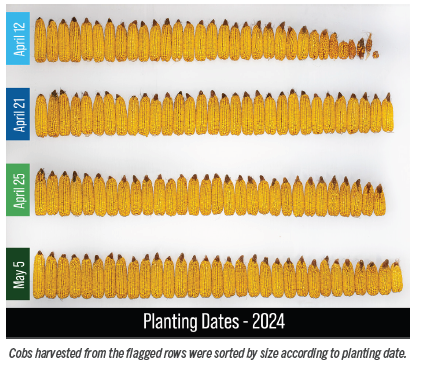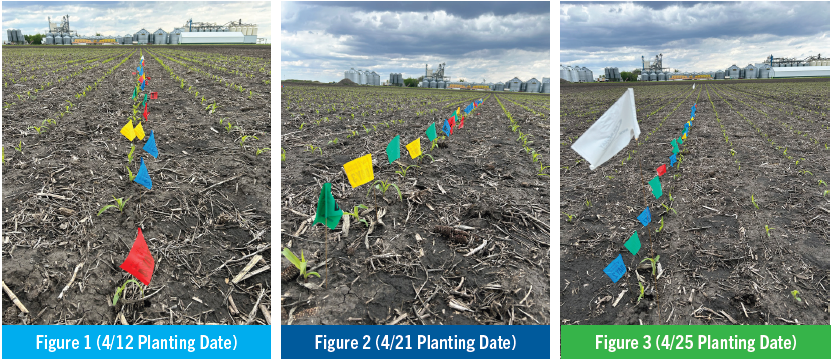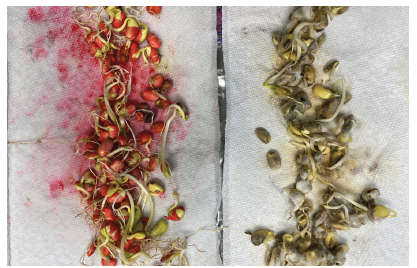How Cold is Too Cold? Temperatures and Mudding in Corn

Each year, there is an optimal time to plant corn, but how do we determine that time, and what happens if we plant too early?
Many factors influence corn emergence, but the two primary drivers are temperature and moisture. Corn seeds require adequate soil moisture and a soil temperature of at least 50°F to germinate.
Planting too early in cold, wet soils can lead to a host of problems. The longer seeds remain in cold, wet soil before the temperature reaches 50°F, the greater the risk of issues such as imbibitional chilling, seedling diseases and uneven emergence, all of which can reduce the expected corn stand.

The photo above shows harvested cobs straight from the field, organized by planting date (noted on the left side).
This helps illustrate how earlier planting dates in colder, wet soil can lead to slower, uneven emergence, which can affect yield.
Imbibitional chilling occurs when a corn seed absorbs cold water, causing the cell membranes to become rigid and rupture, which prevents the seed from emerging.
Cold, wet soils also create a favorable environment for diseases caused by Pythium fungi, which can kill seedlings either before or shortly after emergence.
These factors contribute to reduced yields. Additionally, uneven emergence, often caused by variable cold and wet conditions, can further impact yield. A valuable tool for assessing the impact of planting dates on emergence uniformity is emergence flagging.
In our Field Insights plots, we flagged a 23’9” row length (1/1000th of an acre in 22” rows) for each of our planting date studies. The first plants to emerge in these rows were flagged with green flags for “Day 1.” Every 24 hours, we revisited the rows to flag newly emerged plants for Days 2, 3, 4, and 5 or more with differently colored flags.
The results demonstrate that earlier planting dates in cold wet soils lead to more uneven emergence. This variability contributes to uneven cob development due to smaller, later-emerging corn plants ultimately affecting overall yield.
The soil temperature for the April 12 planting (Figure 1) was 46 degrees, where it largely remained for the next two weeks. In fact, the April 21 planting (Figure 2) had a soil temperature of 42 degrees. However, temperatures warmed quickly from there, reaching 55 degrees just four days later for April 25th (Figure 3).

The variability in emergence is evident in the figures in the colored chart below. This variability is also reflected in the cobs and, ultimately, the overall yield. The key takeaway is the importance of soil temperature and moisture at planting. In addition, the near-term forecast after planting plays a crucial role in establishing a consistent stand.












